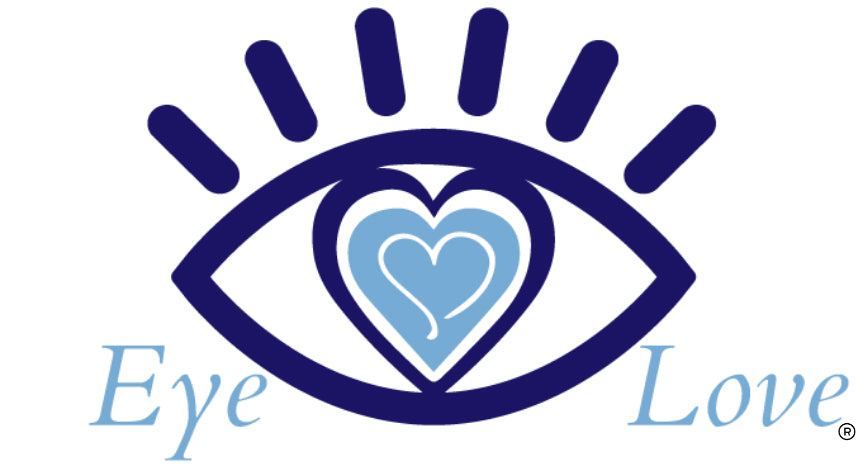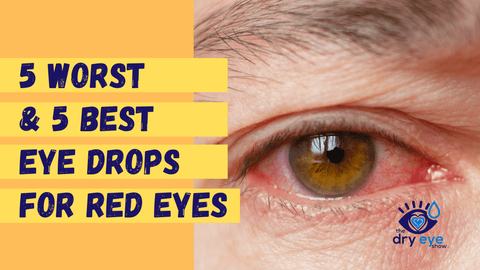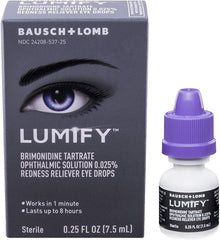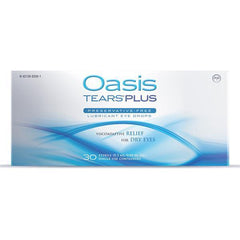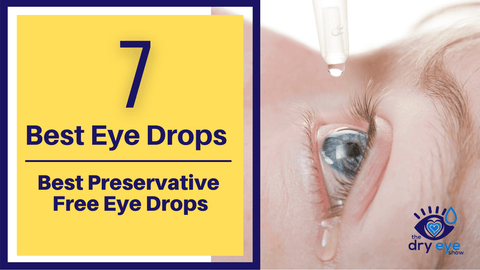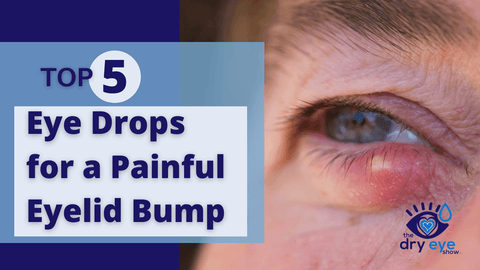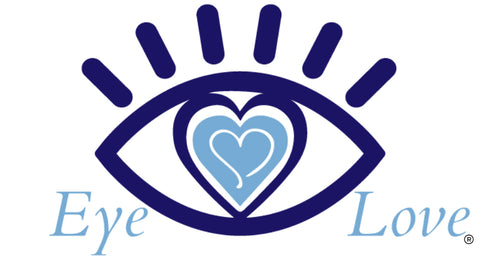5 Most Common Red Eye Causes
Visine and Clear Eyes are the most frequently used eye drops available on the market. What if I told you that these drops could potentially make your dry, irritated eyes worse?
All “redness-reliever” drops do, in fact, remove the redness from your eyes, but your eyes also get addicted to the redness remover, making you rely on the drops even more than before to keep your eyes white.
This is a fantastic marketing technique by those companies! You’re forced to continue purchasing the eye drops to keep your eyes white.
Also, when your eyes are red and irritated, there is usually an underlying cause. Figuring out the cause by seeing an eye care practitioner is always best. Here is a basic guide to why your eyes might feel like they do and what to do about it.
1. Dry, Irritated Eyes
Burning is an incredibly common symptom that goes along with dry, irritated eyes. Warm compresses and omega-3’s are a great starting point to get the oils moving and increase the quality of the oil your eyelid glands produce.
We also prescribe Heyedrate Lid & Lash Cleanser to keep the eyelids clean and functioning properly.
If you need an eye drop, the over-the-counter drop we recommend the most is Oasis Tears Plus Eye Drops. Keep in mind that artificial tears just cover up a problem and do not fix it, but this one is preservative free and is a great option.
2. Allergic Eye Infection
This condition will cause intense itching, especially in the corners of the eyes. Eyes will be watery as well. A great over-the-counter drop for itchy eyes is Alaway. Schedule an appointment with your eye doctor if you're still not feeling better with Alaway, as you could be dealing with something else.
3. Viral Eye Infection (what you know as "Pink Eye")
This condition is contagious! You may notice redness, watery eyes, and general discomfort. This may spread from one eye to the other over the course of a few days, and it may spread to other family members as well.
There is no treatment for "pink eye" since it is viral. Frustrating, I know!
But make sure to keep the eyelid area clean with a hypochlorous acid eyelid cleanser.
4. Bacterial Eye Infection
This is often accompanied by yellow, goopy discharge. Eyelids are often stuck together in the morning. Cleaning the eyelids more thoroughly both morning and evening can help support healthier eyes and eyelids.
We suggest using Heyedrate Lid & Lash Cleanser both in the morning and at night after washing your face. You should see an optometrist or ophthalmologist for an antibiotic if you've got severe discharge or goopiness that persists despite cleansing your eyelids.
5. Contact Lens Complications
There are MANY conditions that fit into this category. Some contact lens complications can be sight threatening. Symptoms are often intense redness, pain, sensitivity to light, and blurred vision.
Give your optometrist a call immediately if you notice any of these symptoms and especially if you've slept in your contact lenses recently (a big no-no!)
Contact Lens Dryness
If your contact lenses are dry, switching to a more frequent replacement lens, such as daily disposables (lenses that you throw away every day), is best.
If you do not throw your contact lenses away daily, switch to a solution without preservatives, such as ClearCare (please read the use instructions carefully and avoid eye contact). When using ClearCare, your lenses will need to sit in the solution for at least six hours before you put them back into your eyes.
As you can tell, an eye exam is essential to make sure you get the correct management for your red eyes. This does not mean you should call your nearest Urgent Care center...most eye doctors are always on call and would be happy to see you, even on weekends!
5 Best Eye Drops for Red Eyes
1. Lumify
Lumify is the latest and greatest redness reliever on the market. Released in mid 2018, this eye drop contains brimonidine tartrate 0.025% and it's the first of it's kind. This medication has traditionally been used for years as a pressure-lowering medication for some eye conditions.
However, many were noticing that brimonidine gave their eyes a white, bright look, completely eliminating any redness in their eyes. Because of this side effect, Lumify was born.
Small studies have shown that Lumify does not demonstrate the same rebound redness effect that other redness relievers do, such as Visine and Clear Eyes. And this is great news for those of you who occasionally need redness relief.
Lumify is intended to be used up to four times daily, although we recommend using this medication only for special occasions and no more than once per day. We'll get to the why on that later!
This hypochlorous acid cleanser is a great answer for those of you with red, irritated eyes. We love this cleanser because it's helping to get to the root of the problem.
This solution is super easy to use. Simply spray it onto a cotton ball or round for application to your closed eyelids. There's no need to rinse it off and it has a 2-year shelf life.
If you love using eye drops, then this one is a great choice. It's preservative free and nonirritating. You'll love the feel of this lubricating eye drop, and you'll be able to use it as much as you want due to the lack of preservatives. It comes in small, single-use vials for your convenience. We also love the mission of this company, and they distribute directly through doctors so you know you're getting a quality product.
Refresh Advanced PF is a favorite of those in our community because it's been around awhile and it usually never disappoints. This is a non-preserved artificial tear that includes no additional chemicals which would irritate the eyes. The goal of artificial tears is lubrication of the tissues on the ocular surface, and this is a great option for daily use.
This eye drop was a favorite of ours for many years, and we prescribed it often in our clinics. The preservative free Retaine MGD is going to be a great choice when you want something to give you instant support for those dry, irritated eyes at the end of a long day, and you can feel free to use these as often as you'd like since they contain no preservatives. These also come in small vials for ease of carrying with you.
5 Worst Eye Drops for Red Eyes
Wait, what?! Yes, you may have noticed that we put Lumify on both the good and bad list. First of all, Lumify is great for soothing redness of the eyes quickly and efficiently. It has also shown no rebound redness in studies, which makes it superior to other redness relievers on the market. However, we can still only recommend this for occasional use because it is not an artificial tear and it does contain benzalkonium chloride (BAK), which is a preservative that can further irritate the eyes. If you have a wedding or a big meeting coming up, go ahead and use a drop. But please don't make it a habit!
Visine solves the red eye problem by causing the affected blood vessels to artificially constrict. Tetrahydrozoline HCl 0.05%, the active ingredient in Visine, causes this physical shrinking of the conjunctival blood vessels.
This accomplishes the immediate goal of lessening the eye’s redness, however, as the medication eventually wears off, rebound redness may occur, which makes the initial problem that much worse.
Truthfully, we just can't recommend Visine use because this rebound redness, where your eyes become just as red as (if not more red than) before, may actually become the default condition of your eyes when used too often.
We feel the same way about ClearEyes as we do Visine. The traditional ClearEyes includes lubricants, but it is also made up of Naphazoline Hydrochloride 0.012% (which is used as the redness reliever).
This is no better than other redness relievers on the market, and you'll still experience rebound redness when using it too often.
If they claim to "get the red out", you should just steer clear. If it's generic in any form, you should tread lightly. Generic eye drops are not as tightly regulated as branded eye drops, which most often have a specific profile of ingredients and preservatives.
Generic drops (even those that only provide lubrication) may change formulas from time to time and you may end up being sensitive to something you never were sensitive to before. This may be because an ingredient or concentration of the product changed, but the packaging did not.
This one makes the bad list because we have friends who love the tingle of these drops, yet they're no better than other redness relieving eye drops out there! Specifically, we're talking about the redness relieving Rohto drops, but they truthfully all contain BAK and should be used sparingly.
The redness reliever drops contain Naphazoline hydrochloride 0.012% as well as menthol, which help to get rid of the redness and also give that cool feeling. If you're into using these every once in awhile for a wedding or meeting, we're alright with that. However, these should only be used for occasional, as-needed use.
What We Use In Our Clinic:
- Dryness Symptoms → Heyedrate Lid & Lash Cleanser
- Nighttime Dryness → Retaine PM
- Itchy Eyes → Alaway
We, Eye Love, LLC, are a participant in the Amazon Services LLC Associates Program, an affiliate advertising program designed to provide a means for us to earn fees by linking to Amazon.com and affiliated sites. MediViz and Heyedrate branded products are made by our company, Eye Love, but we truly believe that our products are the best on the market! It is important to know that our products are not intended to diagnose, treat, cure, or prevent any disease.
